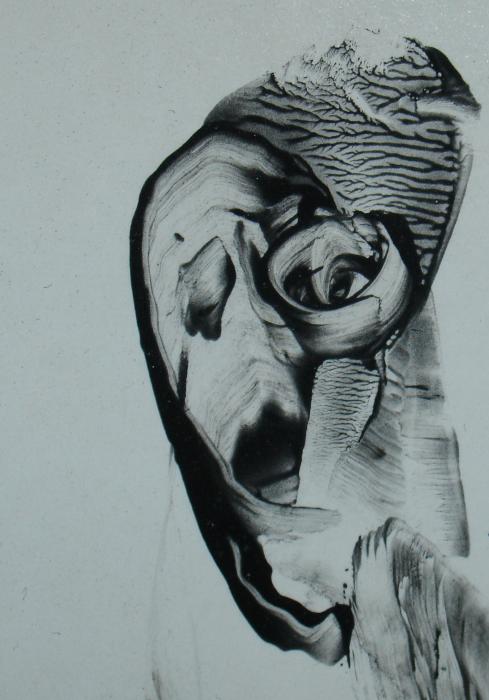“Agony”
Lives are lost every day, leaving others behind to feel grief while mourning the losses. People struggle with loses in many different ways. Often times, one mourns the death of a loved one, or close companion for a very long period of time. Suffering from misery and feeling sympathy throughout these struggles causes a loss of hope for many people. In the painting, “Agony”, Jerome Richard Tiger carefully uses distinct juxtaposition, contrasting color and strong body language to demonstrate the misery and sympathy one feels when another is lost.
Jerome Richard Tiger uses distinct juxtaposition to show the pain that the native man feels as he mourns the death of the woman. Though the woman has passed away, her body appears full. The man is shown to be weak and malnourished, showing his misery over the death of the woman. The fullness of the woman’s body emphasizes the malnourishment of the man’s body. Though the woman is dead, the man appears to be even more lifeless than the woman in the sense that his body is nothing but skin and bones, while her body appears plentiful. The contrasting juxtaposition emphasizes the harsh extent at which the man is suffering.
In the painting, “Agony”, Tiger uses contrasting color to emphasize the misery and sympathy the native man feels after the woman passes away. The artist uses blue and orange, complementary colors to add contrast to the painting. The blue color causes the viewer to feel the sorrowful emotion expressed in the painting. The woman’s pale blue dress shows the strong sorrows her death has inflicted upon the man. The blue background also adds sorrow-filled emotion to the entire painting. The blank blue tinted background also shows that the man doesn’t have much else in life besides the woman who has just passed away. The orange color used throughout the painting shows the man’s warm sympathy towards the death of the woman. The contrasting colors emphasize the strong emotions that Tiger demonstrates in the painting.
The strong body language used in the painting shows how desperate and alone the man has become. The man is sitting down with the woman drawn across his body. The empty background shows the man is alone and has no one else. Tiger paints the arm drawn across the forehead of the man as he looks upwards toward the sky and possibly the heavens. The native man is looking to God and the heavens in grief. He is struggling with the loss of the woman and is miserable now that she is gone. The man is searching for an answer that cannot be found, looking for an explanation of some sort to give reasoning for this terrible tragedy that he is now encountering.
Tiger’s use of distinct juxtaposition, contrasting color, and strong body language complete his painting. He uses these techniques to establish a sense of misery and sympathy throughout his painting. Tiger demonstrates a strong feeling of sympathy and misery that many feel when facing the loss of a loved one. The painting, “Agony”, relates to many people who have lost someone who has closely touched their life and will forever remain in their memory.


